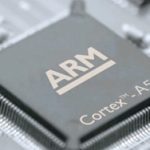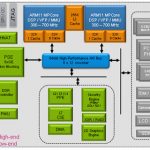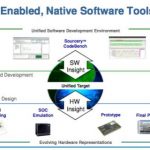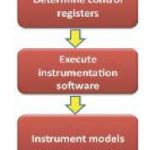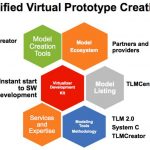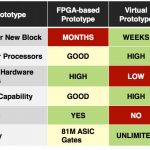Just in time for DAC, Carbon have announced that they have expanded their partnership with ARM to create and deliver models for the ARM Cortex-A57 processor and related IP. One piece of related IP is the Cortex-A53 which can be configured in big.LITTLE multi-core setups to achieve the sweet spot of higher performance and lower power.… Read More
Tag: virtual platform
Using Virtual Platforms to Make IP Decisions
Most SoC designs these days consist largely, but not entirely, of purchased IP blocks. But there are lots of tradeoffs involved in selecting IP blocks, and since those tradeoffs change with process node, even decisions that seem “obvious” based on the last generation of the design, may not be so clear cut. Even if you… Read More
Mentor’s New Embedded Strategy
If there is a trend I can detect in verification in 2013, it is taking verification environments and making the user interface, scripts, and tools work uniformly across the whole spectrum of possible verification “substrates” from virtual platforms, FPGA boards, emulation, actual chips, RTL simulation and so … Read More
Software Driven Power Analysis
Power is a fundamentally hard problem. When you have finished the design, you have accurate power numbers but can’t do anything about them. At the RTL level you have some power information but it is often too late to make major architectural changes (add an offload audio-processor, for example). Early in the design, making… Read More
Altera’s Use of Virtual Platforms
Altera have been making use of Synopsys’s virtual platform technology to accelerate the time to volume by letting software development proceed in parallel with semiconductor development so that the software development does not need to wait until availability of hardware.
In the past, creating the virtual platform … Read More
Samsung Invests in Carbon
I’ve talked before about how venture capitalists will no longer invest in EDA companies since the prospect for a huge return just isn’t there any more. By big return I mean an acquisition at hundreds of millions of dollars, like SPC, CCR, Ambit, Cadmos, Simplex. But we all know that chips cannot be designed without software… Read More
Using Accurate Models to Debug Cellphones
There is an interesting Gizmodo review of an HTC Android-based smartphone. The basically positive review (as good as the iPhone, best Android phone at the time) ends up with an update:UPDATE: After more extensive testing there’s something a little weird going on. You’ll probably only see this while gaming, but there’s… Read More
Carbonize your Imagination
Just up the road from Cambridge-based ARM in Kings Langley is Imagination Technologies, their biggest competitor in the GPU market. Interestingly they also were a customer of VLSI Technology in the early days back when they were called Videologic. Tomorrow, jointly with Carbon, they are announcing that a wide range of their PowerVR,… Read More
Virtual Platforms plus FPGA Prototyping, the Perfect Mix
There are two main approaches to building a substructure on which to do software development and architectural analysis before a chip is ready: virtual platforms and FPGA prototyping.
Virtual platforms have the advantage that they are fairly quick to produce and can be created a long time before RTL design for the various blocks… Read More
ARM Models: Carbon Inside
ARM used to build their own models. By hand. They had an instruction-set simulator (ISS) called ARMulator that was largely intended for software development, and cycle-accurate models that were intended to run within digital simulators for development of the hardware of ARM-based systems.
There were two problems with this … Read More


